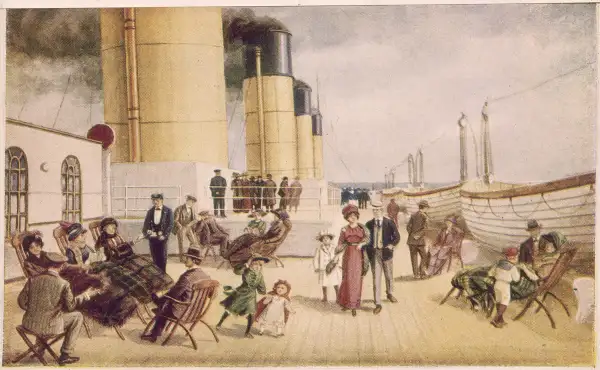How Bad Was Income Inequality on the Titanic?

Last weekend's Bernie Sanders/Larry David skit on Saturday Night Live raised the Titanic (or a close facsimile) to riff on income inequality.
“I am so sick of the 1% getting this preferential treatment,” Sanders’ immigrant passenger says after Larry David’s boorish character insists his family wealth entitles him to a seat in a lifeboat. "Enough is enough."
So, how bad was income inequality on the Titanic, really? Pretty, pretty, pretty bad, as David might say.
The Titanic carried enough lifeboats for only 52% of its passengers, and judging by which passengers got a seat, class clearly mattered. Some 62% of first-class passengers found places in the boats, compared with 41% of second-class passengers, and 25% of steerage (or third-class) passengers. The crew fared even worse, with just 24% saved.
As Walter Lord, author of the classic account of the Titanic disaster A Night to Remember, observed, the famous “women and children first” rule of the sea only went so far. "In first class, just one child was lost," Lord noted in a later book, "…while in third class, 52 out of 79 children were lost—about the same percentage as first class men."
True, some of the Titanic’s one-percenters didn’t take advantage of their position. Most famously, John Jacob Astor IV, age 47, put his pregnant 18-year-old wife in a lifeboat and went down with the ship. Reputedly the richest American of his day, Astor controlled a family fortune estimated in contemporary newspaper accounts at as much as $200 million in 1912 dollars, the equivalent of nearly $5 billion today.
When his body was recovered a week later, his pockets held the soggy equivalent of nearly $60,000 in 2015 dollars, plus an ample supply of English currency, French francs, silver, and gold.
Other one-percenters behaved perhaps less admirably. Among those vilified in the disaster’s aftermath were Sir Cosmo and Lady Duff Gordon, a Scottish aristocrat and his fashion designer wife. They and their secretary left the Titanic in a lifeboat that held just 12 people, despite having a capacity of 40. Sir Cosmo was later accused of bribing the crew to row away from the sinking ship as well as not to turn back and rescue other victims, a charge he and his wife denied. Their lifeboat was mocked in the press as the “Money Boat.”
Still, no one seemed to deny a remark attributed to Lady Duff Gordon. Watching the huge ship disappear beneath the waves, with some 1,500 children, women, and men still aboard, she supposedly lamented to her secretary, “There is your beautiful nightdress gone.”
